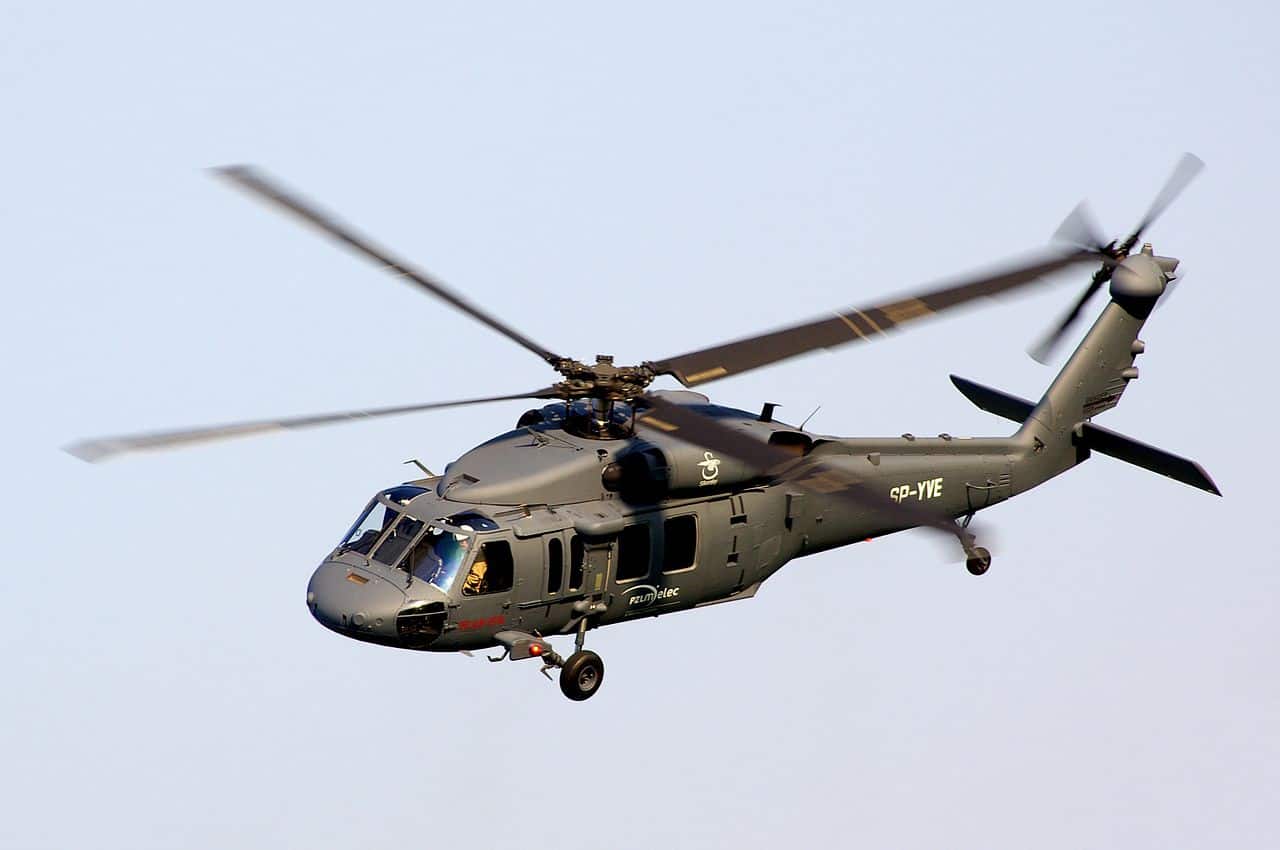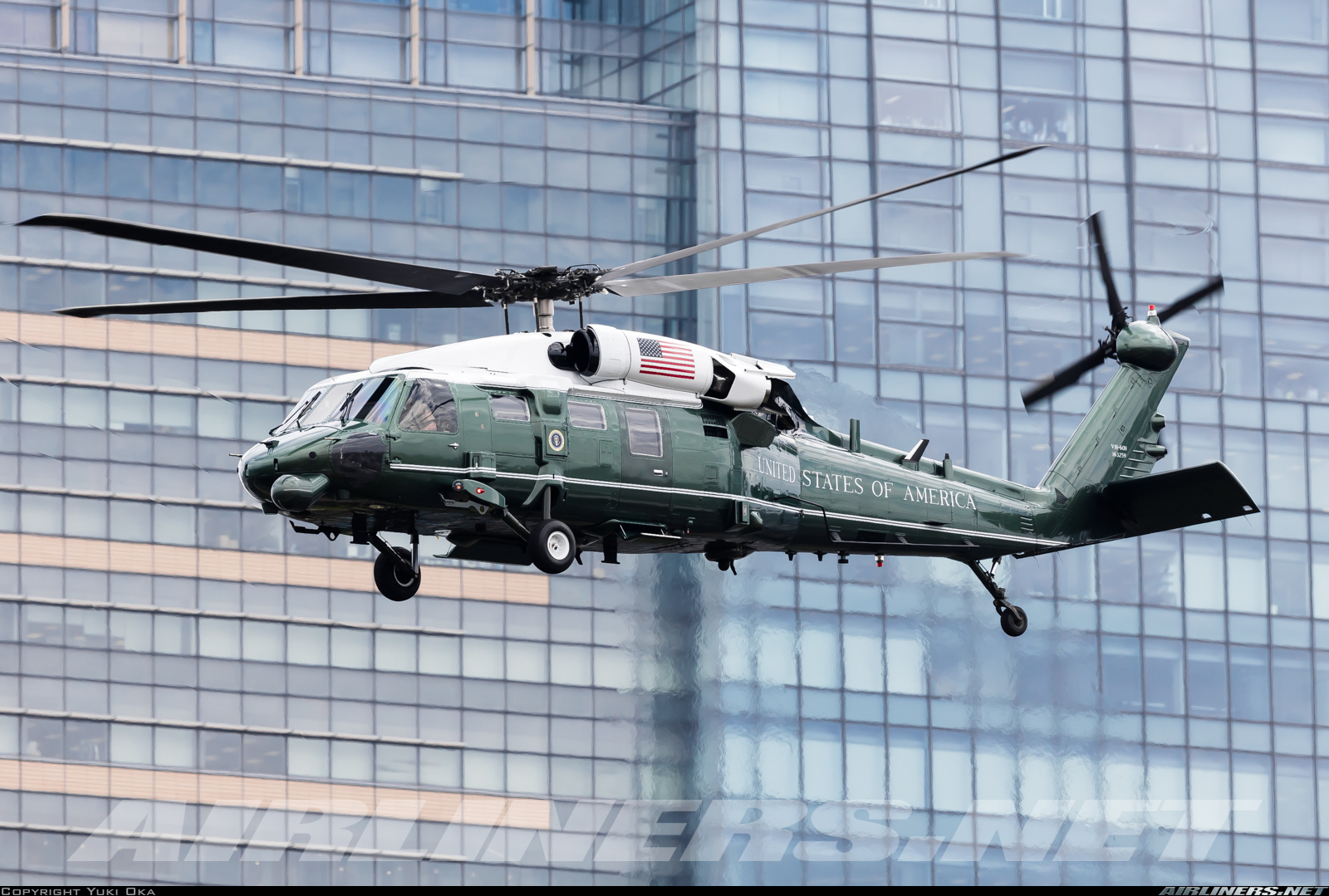H60 Aircraft - The Sikorsky MH-60G/HH-60G Pave Hawk is a four-bladed, twin-engine, medium-lift military helicopter manufactured by Sikorsky Aircraft. It is a derivative of the UH-60 Black Hawk and includes the US Air Force's PAVE electronic systems program. The HH-60/MH-60 is a member of the Sikorsky S-70 family.
While the primary mission of the MH-60G Pave Hawk is the emplacement and recovery of special operations personnel, the primary mission of the HH-60G Pave Hawk is the recovery of personnel in hostile environments, including combat search and rescue operations. Both day and night versions work in a hostile environment. Due to its versatility, the HH-60G can perform peacetime operations such as civilian search and rescue, medical emergency evacuation (MEDEVAC), disaster relief, international assistance and counter-narcotics operations.
H60 Aircraft

In 1981, the US Air Force selected the UH-60A Black Hawk as a replacement for the HH-3E Jolly Gray Giant helicopter. After purchasing some UH-60s, the Air Force began installing aerial refueling probes and additional cockpit fuel tanks. Machine guns were changed from the 7.62 mm (0.308 in) M60 to the .50 caliber (12.7 mm) XM218. These helicopters were called "Trusted Falcons" and entered service in 1987.
Veteran Navy Pilot Shares 10 Interesting Things About Flying Seahawk Helicopters
The Credible Hawks and newer UH-60As were later upgraded and designated the MH-60G Pave Hawk. These reforms were to be carried out in two stages. However, funding allowed only 16 Credible Hawks to receive second stage equipment. These helicopters are dedicated for special operations. The remaining 82 Credible Hawks received first-stage upgrade equipment and were used in combat search and rescue operations. In 1991, these search and rescue Pave Hawks were changed to the HH-60G.
It is an advanced communications and navigation suite that includes an inertial navigation/global positioning/Doppler navigation system, satellite communications, secure voice and high-speed communications. The term PAVE stands for Precision Avionics Vectoring Equipmt.
All HH-60Gs are equipped with automatic flight control systems, night vision goggles illumination, and infrared systems that greatly support low-level operations at night. In addition, some Pave Hawks are equipped with color weather radar and anti-icing systems that allow the HH-60G to operate in all weather conditions. Pave Hawk mission equipment includes a collapsible aircraft refueling probe, an internal auxiliary fuel tank, two 7.62 mm miniguns or .50 caliber machine guns that can be deployed by the crew (or pilot) and weighs 8,000 pounds (3,600 kg ) Is. Cargo Hook Capacity All HH-60Gs have retractable rotor blades to improve airlift and ship performance.
Pave Hawk combat equipment includes a radar warning receiver, an infrared interceptor, and a fire/anti-missile beam system. The HH-60G rescue equipment includes a hoist capable of lifting 600 pounds (270 kg) to a height of 200 feet (60 m) and a personnel locating system. Several Pave Hawks are equipped with external tactical receivers capable of receiving real-time mission updates.
My Black Hawk Story
In 1999, the USAF identified a need for helicopters with improved range, speed, and cabin space. An analysis of options was conducted in 2002 and funding for 141 aircraft began in 2004 as part of the Personnel Recovery Vehicle program. In 2005, it became CSAR-X, or Combat Search and Rescue. He flew the Sikorsky HH-92 Superhawk, the Lockheed Martin VH-71 Kestrel and the Boeing HH-47 Chinook. The HH-47 won the competition in November 2006, but the award was withdrawn after two successful competitors. A request for proposal (RFP) was issued again in 2007, but before the proposal was accepted, it was challenged again, leading to a second cancellation.
In March 2010, the USAF announced a capital increase plan to bring its inventory of 99 aircraft back to 112 aircraft, a phased replacement of aging HH-60Gs. A secondary plan to replace the 13 HH-60s lost in combat began in 2001. The USAF postponed secondary combat search and rescue operations that required larger helicopters. A version based on the UH-60M was proposed as an alternative.
On October 22, 2012, the USAF issued a request for up to 112 combat rescue helicopters (CRH) to replace the HH-60G, whose primary mission is to retrieve personnel from hostile territory. Other missions include civilian search and rescue, disaster relief, and casualty and medical evacuation.

It had a combat radius of 225 nmi (259 mi; 417 km), a weight of 1,500 lb (680 kg) and space for four stretchers. AgustaWestland AW101 was a transit.
Sikorsky Black Hawk Helicopter
In December 2012, rivals AgustaWestland, EADS, Boeing and Bell Helicopter withdrew, saying the RFP favored Sikorsky and did not reward the capabilities of its rival's aircraft.
The USAF argued that the competition was not designed to please Sikorsky and that the terms were clear about what capabilities they wanted and could deliver. Sikorsky was the only remaining bidder, and subcontractor Lockheed Martin provided mission equipment and electronic survival kits. Sikorsky and the US Air Force thoroughly evaluated the proposed CRH-60, a variant of the MH-60 special operations helicopter.
The CRH-60 differed from the MH-60 in more payload and cabin capacity, wider rotor blades, and better maneuverability.
In September 2013, the first draft of the USAF's FY 2015 budget proposed cuts to the CIT program, but would maintain the HH-60 fleet.
Sikorsky Uh60, Hh60, Mh60, Blackhawk, S70, Etc.: Covers, Plugs, Etc
Congress appropriated more than $300 million for the program in fiscal year 2014 and plans to transfer $430 million through fiscal year 2019.
On June 26, 2014, the USAF awarded a $1.3 billion contract to Sikorsky and Lockheed Martin for the first four aircraft and the purchase of 112 aircraft for $7.9 billion.
As of 2015, the US Air Force HH-60G Pave Hawk is operated by Air Combat Command (ACC), US Air Forces Europe (USAFE), Pacific Air Forces (PACAF), and Air Training and Education Command (AETC). . Air Force Reserve Command (AFRC) and Air National Guard (ANG). Several HH-60Gs are operated by the Air Force Materiel Command (AFMC) for flight test purposes.

During Operation Desert Storm, Pave Hawks provided combat search and rescue operations to coalition air forces in western Iraq, Saudi Arabia, the coast of Kuwait, and the Persian Gulf. They also provided emergency evacuation cover for US Navy, Air Force and Ground Forces (SEAL) teams that infiltrated the coast of Kuwait before the attack.
Arista Uh 60
All MH-60Gs were retired by the Air Force Special Operations Command (AFSOC) in 1991. At that time, most MH-60Gs were redesignated HH-60Gs and transferred to Air Combat Command (ACC) and Air Force Reserve Command, which received ACC. and Air National Guard units.
On October 29, 1992, an MH-60G Pave Hawk crashed into Utah's Great Salt Lake about 100 meters north of Antelope Island during a training exercise in bad weather. Twelve passengers from the 75th Army Guard unit and the 1st Special Operations Air Wing of the Air Force died in this accident. The pilot, Air Force Maj. Stephen J. Lavishin was the only survivor.
During Allied operations, the Pave Hawk performed continuous combat search and rescue missions for NATO air forces and successfully recovered two US Air Force pilots isolated behind battle lines.
In March 2000, three Pawhawks were deployed to Hodspruit Air Force Base in South Africa to support international operations in the Mozambique flood disaster. The HH-60G flew 240 sorties in 17 days and delivered more than 160 tons of humanitarian aid.
Aircraft Photo Of 87 26006 / 26006
Pacific Air Force Pave Hawks also participated in a major humanitarian effort to aid tsunami victims in Sri Lanka in early 2005.
In the fall of 2005, Pave Hawks from various Air Force Commands participated in the Hurricane Katrina Survivor Rescue Operation, rescuing thousands of stranded people.
Pave Hawks regularly deployed during Operation Iraqi Freedom and Operation New Dawn, and during Operation Freedom they continued to search for US and coalition fixed-wing combat aircraft to support Army and Marine Corps ground operations in those areas. Activity.

On March 15, 2018, an HH-60G CSAR crashed near Al-Qaim, Iraq, killing all on board. The Air Force is investigating the crash. This article is about the United States Army military variants of the Sikorsky S-70 family and their operators. For USAF versions, see Sikorsky HH-60 Pave Hawk. For an overview of the S-70 family and information on civilian models and their operators, see Sikorsky S-70.
File:an Mh 60s Sea Hawk Helicopter Prepares To Take Off From The Flight Deck. (36399192206).jpg
The Sikorsky UH-60 Black Hawk is a four-bladed, twin-engine, medium-altitude military helicopter manufactured by the Sikorsky Aircraft Company. Sikorsky submitted the S-70 in 1972 for the US Army's Utility Tactical Transport Aircraft System (UTTAS) competition. The Army designated the design as the YUH-60A and selected the Black Hawk as the program winner in 1976. Boeing Vertol YUH-61 flight competition.
Named after the Native American warrior Black Hawk, the UH-60A was commissioned by the US Army in 1979 to replace the Bell UH-1 Iroquois as the Army's tactical transport helicopter. It was followed by electronic warfare and special operations versions of the Black Hawk. Improved versions of the UH-60L and UH-60M instruments were also developed. Modified versions were developed for the US Navy, Air Force and Coast Guard. In addition to US military use, the UH-60 family has been exported to several countries. Black Hawks have fought in conflicts in Granada, Panama, Iraq, Somalia, the Balkans, Afghanistan and other parts of the Middle East.
In the late 1960s, the US Army
Aircraft appraisal online, free aircraft appraisal, aircraft appraisal services, aircraft appraisal cost, aircraft appraisal jobs, aircraft appraisal course, aircraft appraisal training, business appraisal, rolex appraisal, appraisal software, 409a appraisal, aircraft appraisal report
Post A Comment:
0 comments so far,add yours